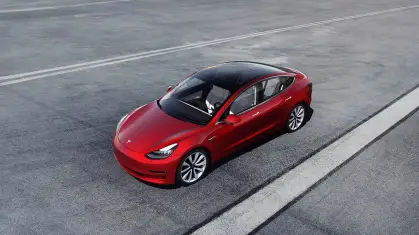In 2024, the landscape of electric vehicles (EVs) is set to undergo a transformative shift thanks to new tax credits that promise to make sustainable transportation more accessible than ever before. With the global push towards reducing carbon emissions, these tax incentives are not just financial perks but catalysts for a green mobility revolution. Recent data from Bloomberg Green indicates that EV sales are projected to rise by 30% from the previous year, largely due to these credits, which are designed to encourage more consumers to transition from traditional combustion engines to electric vehicles. In this article, we’ll explore how 2024 EV tax credits are reshaping the auto industry, what this means for the average consumer, and how you can take advantage of these incentives.
Understanding the 2024 EV Tax Credits
What Are EV Tax Credits?
EV tax credits are government incentives aimed at reducing the initial cost of purchasing electric vehicles. In 2024, these credits have been revamped to offer more significant savings, making EVs a more viable option for a wider range of consumers. According to the IRS, these credits can reduce the cost of certain new EV models by up to $7,500. This financial relief is a game-changer, particularly as it applies to a broader spectrum of vehicles, including popular models from brands like Tesla, Ford, and Hyundai.
Key Benefits of the 2024 EV Tax Credits
- Increased Affordability: By lowering the purchase price, these credits make EVs accessible to middle-income families.
- Expanded Eligibility: Unlike previous years, the 2024 credits apply to both new and used EVs, broadening the market.
- Encouraging Sustainable Choices: With more affordable options, consumers are more likely to choose EVs over fossil fuel-powered vehicles, thus contributing to a reduction in greenhouse gas emissions.
The Impact on EV Adoption
Accelerating Market Growth
The introduction of enhanced EV tax credits in 2024 is expected to drive a significant increase in EV adoption. According to InsideEVs, the market share of electric vehicles in the U.S. is anticipated to reach 15% by the end of the year. This growth is not only due to the financial incentives but also because of increased consumer awareness about environmental issues and the long-term cost savings associated with EV ownership.
Boosting Infrastructure Development
As more consumers switch to electric vehicles, the demand for charging infrastructure is skyrocketing. Investments in super-fast charging stations and home charging units are expected to rise, with Reuters Mobility reporting a 50% increase in public charging stations by the end of 2024. This expansion is crucial for alleviating range anxiety among potential EV buyers.
How to Take Advantage of the 2024 Tax Credits
Tips for Prospective EV Buyers
- Research Eligible Models: Not all EVs qualify for the full tax credit. Brands like Tesla, Ford, and Nissan offer models that are fully eligible, but it’s essential to verify each model’s eligibility.
-
Understand the Fine Print: Some credits may phase out based on the manufacturer’s sales volume. Stay informed by checking updates from official resources like the IRS or Electrek.
-
Plan Your Purchase Timing: Buying at the right time can maximize your savings. Consider purchasing early in the year before potential reductions in credit amounts.
Where to Buy Your EV
- Dealerships: Many dealerships offer additional incentives on top of federal credits. Look for dealerships with EV expertise.
- Online Platforms: Websites like AutoTrader and Carvana provide comprehensive listings and reviews, making it easier to compare models and prices.
Real-World Adaptation: A Case Study
The Ford Mustang Mach-E
The Ford Mustang Mach-E has become a poster child for the new wave of electric vehicles benefiting from tax credits. With a potential $7,500 reduction, the Mach-E, which offers a range of up to 300 miles on a single charge, has seen a surge in popularity. According to Ford EV, sales are projected to double in 2024, showcasing how tax credits can influence consumer decisions and accelerate the adoption of electric mobility.
Conclusion: The Road Ahead for EVs
The 2024 EV tax credits are not just a financial incentive; they are a pivotal force driving the green mobility revolution. With increased affordability, enhanced infrastructure, and a growing market share, electric vehicles are poised to become a mainstream choice for environmentally conscious consumers. As we move forward, it will be exciting to see how these changes continue to shape the auto industry and our everyday lives.
Are you ready to join the EV revolution? Share your thoughts or questions in the comments below, and let’s engage in a discussion about the future of sustainable transportation. As more consumers make the switch, we can look forward to a cleaner, greener future where electric vehicles are the norm rather than the exception.

